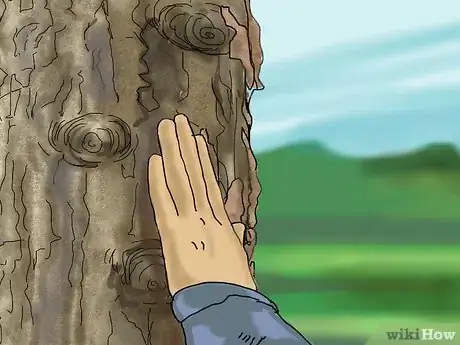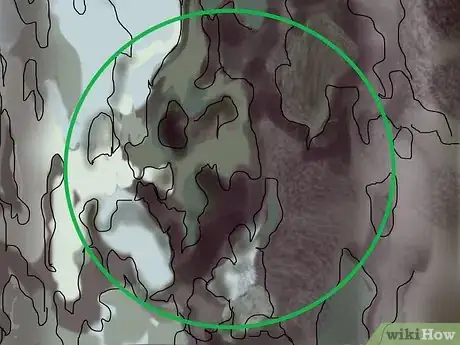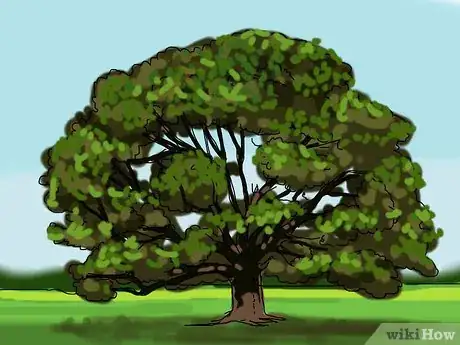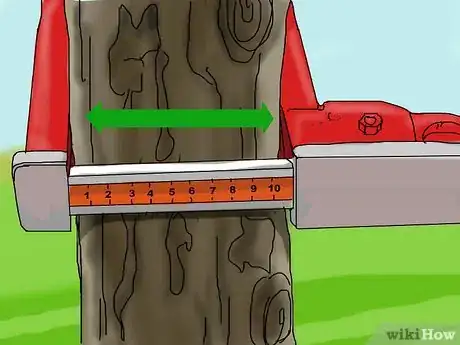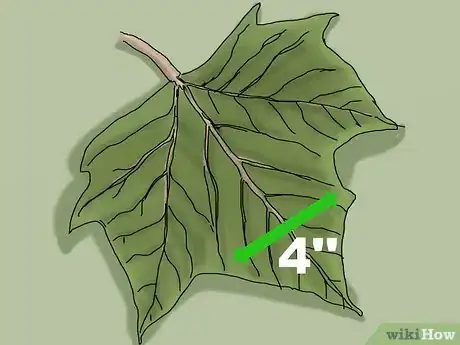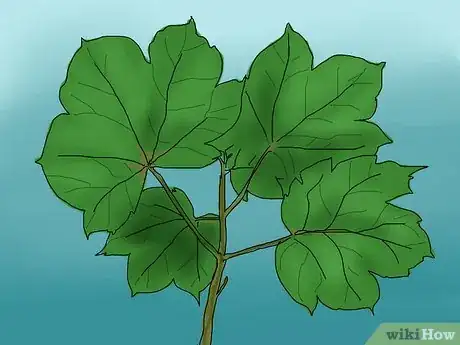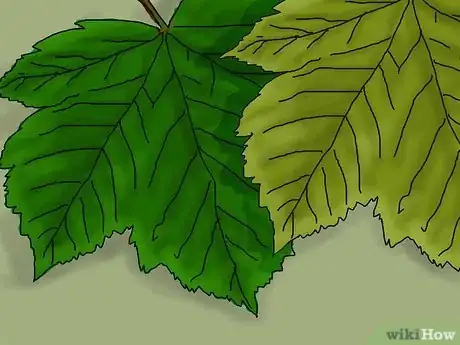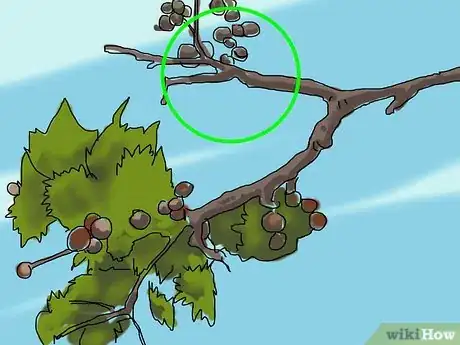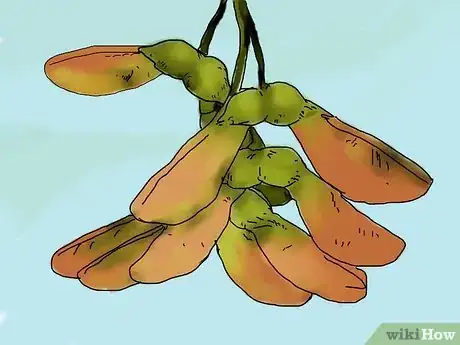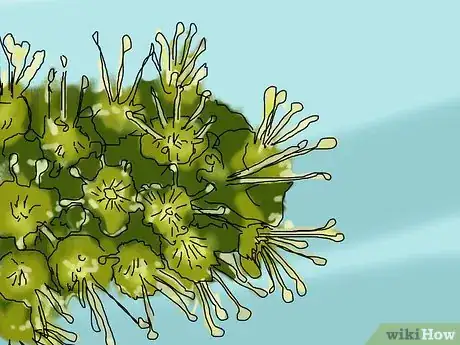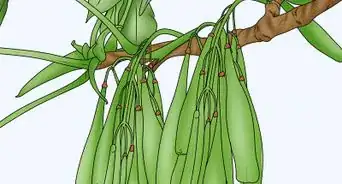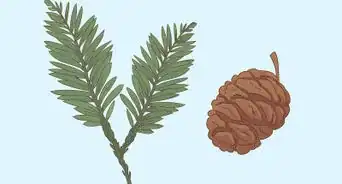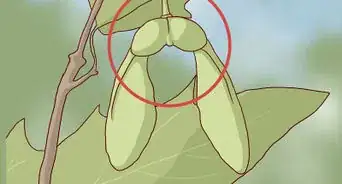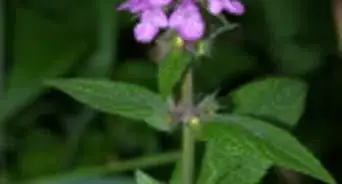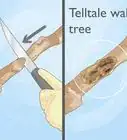This article was co-authored by Michael Simpson, PhD. Dr. Michael Simpson (Mike) is a Registered Professional Biologist in British Columbia, Canada. He has over 20 years of experience in ecology research and professional practice in Britain and North America, with an emphasis on plants and biological diversity. Mike also specializes in science communication and providing education and technical support for ecology projects. Mike received a BSc with honors in Ecology and an MA in Society, Science, and Nature from The University of Lancaster in England as well as a Ph.D. from the University of Alberta. He has worked in British, North American, and South American ecosystems, and with First Nations communities, non-profits, government, academia, and industry.
There are 7 references cited in this article, which can be found at the bottom of the page.
This article has been viewed 133,196 times.
Sycamore trees are abundant in the eastern half of the United States, and their hybrid relatives are popular across Europe. These massive, fast-growing trees are loved for their shade and their resistance to splitting. If you look carefully at a tree’s bark, leaves, and fruits, you can determine whether you’ve found a sycamore tree.
Steps
Identifying Based on Bark and Branches
-
1
-
2Search for “camouflage” colors in the bark. Because the older bark peels off and reveals younger bark beneath, the bark of sycamores will be a variety of colors – brown, green, tan, and white. This gives the tree a distinctive pattern that resembles army camouflage.[3]Advertisement
-
3Look for a massive, dome-shaped canopy. The crown, or canopy, of a sycamore tree can grow to over 60 feet (18 meters) wide and 80 feet (24 meters) tall. The branches and leaves fill out this space so that it creates a wide dome.[4]
-
4Inspect the width of the trunk. While not the tallest tree, the sycamore grows to a larger diameter than any other tree in the eastern United States, so look for a trunk diameter of 3-8 feet (1-2.5 meters).
-
5Find zig-zagging twigs. The twigs that grow off the branches will go in one direction, and then switch directions just after a bud pops out. This creates a zig-zig shape that looks a little like a lightening bolt.[5]
Identifying Based on Leaves
-
1Count five distinct lobes. A lobe is a separate section of the leaf that radiates off the central point, kind of like the fingers on your hand. Most sycamore leaves will have five large lobes, each with its own distinct vein running along it.[6]
-
2Search for a single leaf attached at one location. Sycamores have alternate leaves, which means a single leaf attaches to the stem in one spot, and the leaves alternate from side to side as you move along the stem.
- This is opposed to two leaves attaching at the same location on a stem, which is referred to as having opposite leaves.
-
3
-
4Look for a dark green or yellow color. In spring and summer, the leaves will be dark green. Then in the autumn they turn yellow before falling off for the winter.[11]
Identifying Based on Flowers and Fruits
-
1Inspect the tree for small, woody balls. In autumn, the sycamore produces a small, woody ball on a long stem, which is its fruit. The American sycamore produces these as single, pendulum-like growths, while non-native hybrid relatives may have two or three of these hanging from one stalk.[12]
-
2Search for “helicopter” seeds. Sycamore seeds are arranged in V-shaped pairs that are often nicknamed helicopters because of the way they swirl and spin when they fall from the tree.[13] This allows the tree a larger area of seed dispersal since they can flutter farther away. Look for them in clusters at the end of twigs, or on the ground beneath the tree.[14]
-
3Look for small, yellow-green flowers. Sycamores have both male and female flowers on the same tree, though they grow on different stalks. They have a white stamen and very small, thin petals, which are a light green or yellow.
Expert Q&A
-
QuestionWhat does a sycamore look like?
 Michael Simpson, PhDDr. Michael Simpson (Mike) is a Registered Professional Biologist in British Columbia, Canada. He has over 20 years of experience in ecology research and professional practice in Britain and North America, with an emphasis on plants and biological diversity. Mike also specializes in science communication and providing education and technical support for ecology projects. Mike received a BSc with honors in Ecology and an MA in Society, Science, and Nature from The University of Lancaster in England as well as a Ph.D. from the University of Alberta. He has worked in British, North American, and South American ecosystems, and with First Nations communities, non-profits, government, academia, and industry.
Michael Simpson, PhDDr. Michael Simpson (Mike) is a Registered Professional Biologist in British Columbia, Canada. He has over 20 years of experience in ecology research and professional practice in Britain and North America, with an emphasis on plants and biological diversity. Mike also specializes in science communication and providing education and technical support for ecology projects. Mike received a BSc with honors in Ecology and an MA in Society, Science, and Nature from The University of Lancaster in England as well as a Ph.D. from the University of Alberta. He has worked in British, North American, and South American ecosystems, and with First Nations communities, non-profits, government, academia, and industry.
Registered Professional Biologist Well, that depends, given that different species are known by this name in different countries. In the UK, sycamore is the common name of Acer pseudoplatanus, a species of maple. In North America, however, sycamore is more commonly used in reference to Platanus species, or plane trees.
Well, that depends, given that different species are known by this name in different countries. In the UK, sycamore is the common name of Acer pseudoplatanus, a species of maple. In North America, however, sycamore is more commonly used in reference to Platanus species, or plane trees. -
QuestionWhat are the different types of sycamore trees?
 Michael Simpson, PhDDr. Michael Simpson (Mike) is a Registered Professional Biologist in British Columbia, Canada. He has over 20 years of experience in ecology research and professional practice in Britain and North America, with an emphasis on plants and biological diversity. Mike also specializes in science communication and providing education and technical support for ecology projects. Mike received a BSc with honors in Ecology and an MA in Society, Science, and Nature from The University of Lancaster in England as well as a Ph.D. from the University of Alberta. He has worked in British, North American, and South American ecosystems, and with First Nations communities, non-profits, government, academia, and industry.
Michael Simpson, PhDDr. Michael Simpson (Mike) is a Registered Professional Biologist in British Columbia, Canada. He has over 20 years of experience in ecology research and professional practice in Britain and North America, with an emphasis on plants and biological diversity. Mike also specializes in science communication and providing education and technical support for ecology projects. Mike received a BSc with honors in Ecology and an MA in Society, Science, and Nature from The University of Lancaster in England as well as a Ph.D. from the University of Alberta. He has worked in British, North American, and South American ecosystems, and with First Nations communities, non-profits, government, academia, and industry.
Registered Professional Biologist The American sycamore is large in size, has a flaky bark and dangling furry-looking spherical fruits. British sycamores can also be large in size and have bark that flakes off in scales as it ages but the fruits are different as they are flattish and winged.
The American sycamore is large in size, has a flaky bark and dangling furry-looking spherical fruits. British sycamores can also be large in size and have bark that flakes off in scales as it ages but the fruits are different as they are flattish and winged. -
QuestionWhat do sycamore tree leaves look like?
 Michael Simpson, PhDDr. Michael Simpson (Mike) is a Registered Professional Biologist in British Columbia, Canada. He has over 20 years of experience in ecology research and professional practice in Britain and North America, with an emphasis on plants and biological diversity. Mike also specializes in science communication and providing education and technical support for ecology projects. Mike received a BSc with honors in Ecology and an MA in Society, Science, and Nature from The University of Lancaster in England as well as a Ph.D. from the University of Alberta. He has worked in British, North American, and South American ecosystems, and with First Nations communities, non-profits, government, academia, and industry.
Michael Simpson, PhDDr. Michael Simpson (Mike) is a Registered Professional Biologist in British Columbia, Canada. He has over 20 years of experience in ecology research and professional practice in Britain and North America, with an emphasis on plants and biological diversity. Mike also specializes in science communication and providing education and technical support for ecology projects. Mike received a BSc with honors in Ecology and an MA in Society, Science, and Nature from The University of Lancaster in England as well as a Ph.D. from the University of Alberta. He has worked in British, North American, and South American ecosystems, and with First Nations communities, non-profits, government, academia, and industry.
Registered Professional Biologist Leaves of both the american and british species are three-lobed, with each lobe having a pointed tip, but the spaces between lobes are deeper on the British sycamore and the leaves of that species are opposite along the stem, whereas those of the American sycamore alternate on different sides of the stem.
Leaves of both the american and british species are three-lobed, with each lobe having a pointed tip, but the spaces between lobes are deeper on the British sycamore and the leaves of that species are opposite along the stem, whereas those of the American sycamore alternate on different sides of the stem.
References
- ↑ Michael Simpson, PhD. Registered Professional Biologist. Expert Interview. 8 September 2021.
- ↑ https://rurallivingtoday.com/gardens/sycamore-tree/
- ↑ http://dendro.cnre.vt.edu/dendrology/syllabus/factsheet.cfm?ID=36
- ↑ https://rurallivingtoday.com/gardens/sycamore-tree/
- ↑ https://naturalresources.extension.iastate.edu/forestry/iowa_trees/trees/sycamore.html
- ↑ http://www.woodlands.co.uk/blog/tree-identification/sycamore/
- ↑ Michael Simpson, PhD. Registered Professional Biologist. Expert Interview. 8 September 2021.
- ↑ https://www.thoughtco.com/identify-maple-sycamore-yellow-poplar-sweetgum-leaves-1343480
- ↑ Michael Simpson, PhD. Registered Professional Biologist. Expert Interview. 8 September 2021.
- ↑ http://www.woodlands.co.uk/blog/tree-identification/sycamore/
- ↑ http://www.softschools.com/facts/plants/sycamore_tree_facts/1209/
- ↑ https://rurallivingtoday.com/gardens/sycamore-tree/
- ↑ Michael Simpson, PhD. Registered Professional Biologist. Expert Interview. 8 September 2021.
- ↑ http://www.softschools.com/facts/plants/sycamore_tree_facts/1209/
About This Article
To identify a sycamore tree, look for a tree with a wide trunk and a large, dome-shaped canopy. Sycamores have the largest trunk diameter of any tree in the United States. The leaves on a sycamore tree have 3-5 lobes and toothed edges. The tops of them are a darker shade of green than the bottoms, and they turn brown during the fall. You can also identify a sycamore tree by looking at its bark. It will have a distinct camouflage-pattern with shades of gray, tan, white, and green. Look for small ball-shaped fruit hanging from a sycamore tree during the summer, fall, and winter. To learn how to identify a sycamore tree based on its flowers and fruits, keep reading!
